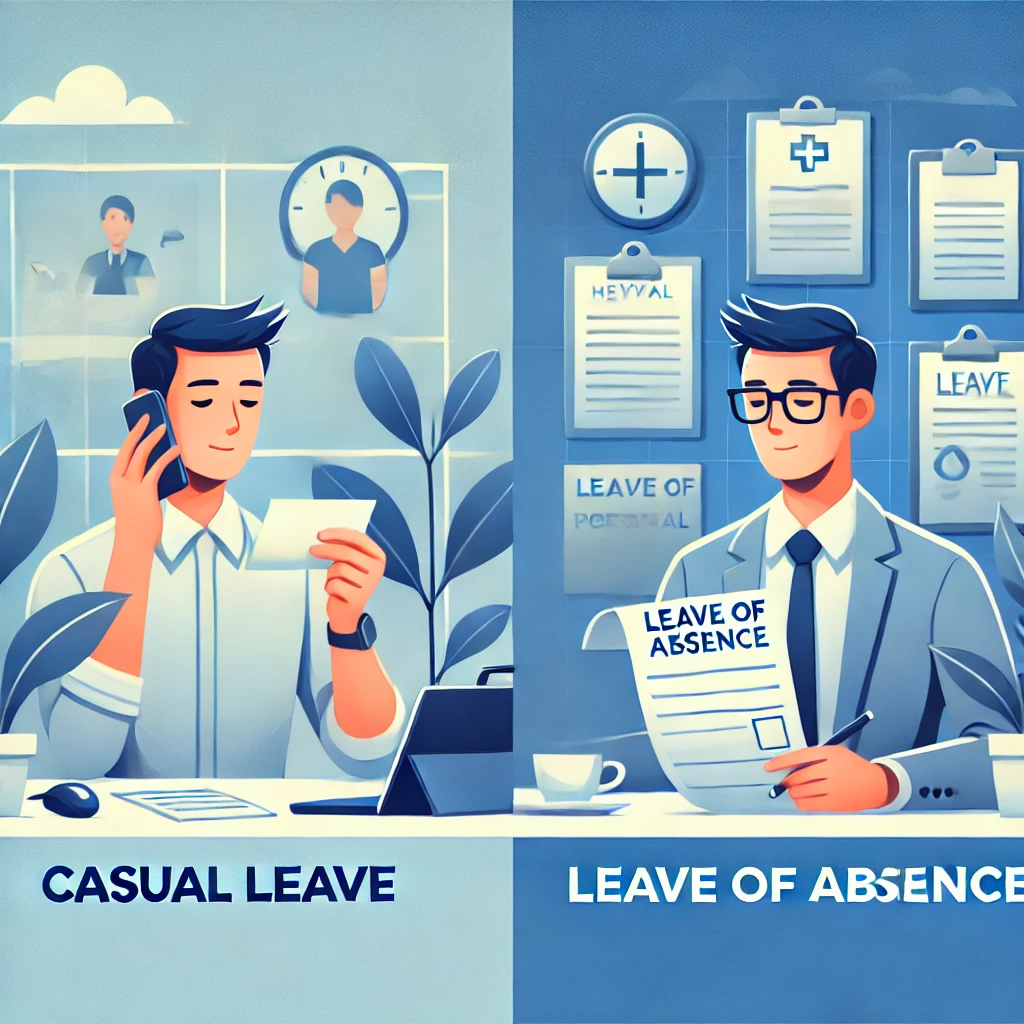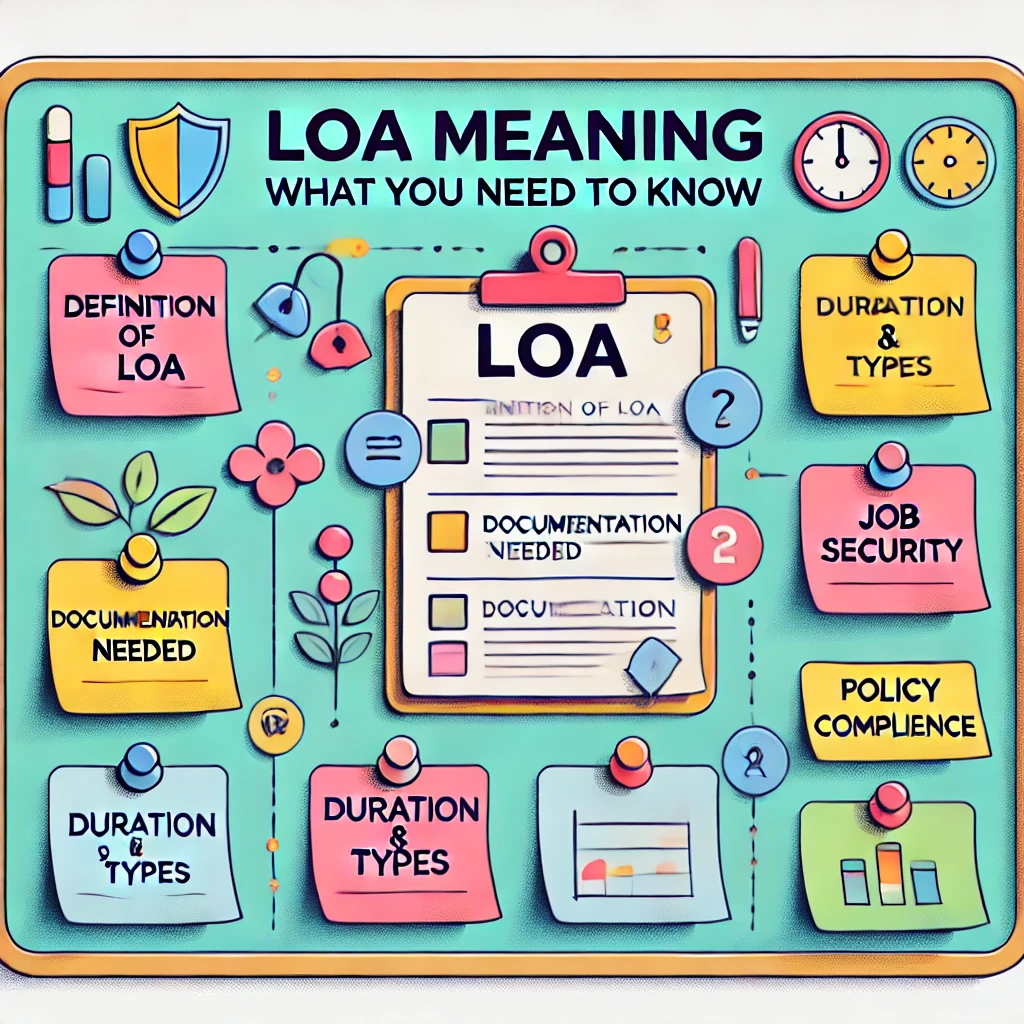LoA meaning relates to how a leave of absence impacts an employee from the position of an HSE (Health, Safety, and Environment) professional. Rest easy; we are going to thoroughly define what ‘absence’ means and examine the etymology behind it, further examining what the difference is between a leave and a leave of absence. In the end, you will understand the implications of a leave of absence and how it affects the employee or organization policy-wise in conjunction with the practices of LOA.
What does Leave of Absence (LOA) stand for?
An employee may take time off from work for personal, medical, or professional reasons through a leave of absence. It is often approved—and sometimes paid—by the employer. In terms of an HSE viewpoint, an LOA allows employees to recuperate from stress, manage their personal health issues, or even deal with family matters while maintaining a sane level of productivity; these outcomes are each valuable in creating a safe and healthy work environment. The below information give you detail when you search about LOA Meaning
Key Attributes of an LOA
- Granted by Management or HR: The leave will be accompanied by formal sign-off from the management.
- Signed LOA Duration: Every LOA is to be accompanied with start and end dates.
- Reasonable LOA: The LOA is only applicable for medical reasons, emergencies, education, or any other defining life events.
- Protected Status: Job protection is often severe under certain legal provisions pertaining to labor laws.
Leave versus Leave of Absence—Understanding the Difference When you search for the LOA Meaning
A frequently asked question is: What is the difference between a leave of absence and leave? Although these terms are used synonymously at times, there are some differences:
- Casual Leave vs. LOA: Casual leave is usually granted for a short period and does not require as extensive formal procedures for granting a leave of absence.
- LOA: Usually means longer periods away from work and normally requires some form of documentation, such as medical certificates or legal notices.
- Job Protection: Unlike casual or annual leaves, LOAs have some level of guarantee that the employee’s job will be kept available for them to return to.
- Policy and Regulations: Such LOAs are often protected by certain policies of a company or some laws.

Importance of Leave of Absence (LOA) in HSE Management
- Mental Health: Taking time off for mental health issues fosters a safer work environment.
- Workplace Safety: Employees who are unwell can be a source of workplace accidents. Being granted an LOA maintains reasonable safety levels.
- Preventing Burnout: LOAs help recover from burnout, which in turn increases productivity and morale in the long run.
- Regulatory Compliance: In some areas, submitting a LOA is mandatory, which means employers must comply or face legal and moral repercussions.
Most Frequent Leave of Absence Reasons
- Medical Reasons:
- Personal Illness: Most serious ill health conditions warrant LOAs that help employees recover without work pressure.
- Family Care: Sick family members can allow employees to take compassionate leave and LOAs become applicable.
- Mental Health: Stress and anxiety in contemporary society can be dealt with through LOAs, which are increasingly being employed.
- Personal and Professional Development Goals:
- Education: Employees are eligible for ‘time-off’ from work to study or earn new certifications that increase their value.
- Sabbaticals: Some organizations grant sabbaticals to further encourage ongoing personal and professional development.
- Special Circumstances:
- Maternity/Paternity Leave: These types of LOAs are designed to help and support new parents while providing them with job security.
- Military Service: Employees who serve in the military are granted these types of voluntary leaves of absence to allow them to serve.
The HSE Professional’s Role in LOA Management
- Policy Development and Implementation:
- Crafting Clear Guidelines: Partner with HR to create user-friendly LOA policies that explain eligibility, timeframes, and workflows.
- Ensuring Compliance: Monitor changes in federal, state, and local laws that affect LOA policies to ensure organizational compliance.
- Employee Education and Communication:
- Regular Training: Hold workshops where employees can learn about ways to request or take a LOA and the reason why it’s beneficial.
- Clear Communication Channels: Set up a contact point for employees to relay questions or issues concerning LOA policies.
- Monitoring and Continuous Improvement:
- Feedback Mechanisms: Survey employees over their perceived well-being after every LOA.
- Data Analysis: Identify and analyze LOA trends in terms of employees’ departments or jobs, and suggest appropriate measures to reduce workplace hazards.
Best Practices for Requesting a Leave of Absence
- Review Company Policy
- Consult your Manager or HR
- Submit Formal Documentation
- Plan for Transition
- Stay Connected
Frequently Asked Questions (LOA Meaning)
Q1: What is a leave of absence (LOA) in simple terms?
A1: A LOA is a set amount of time approved by a manager where an employee is not required to work due to health issues, personal reasons, or work-related problems.
Q2: What is the difference between leave and leave of absence?
A2: A leave of absence (LOA) typically differs from casual leave because while the latter is often informal and shorter in duration, LOAs are often protected and may require adherence to certain policies.
A properly developed approach to leaves of absence promotes legally compliant and supportive work conditions, as well as a healthy organizational culture. As an HSE practitioner, endorsing LOA policies not only protects the individual but contributes to overall safety within the workplace.

